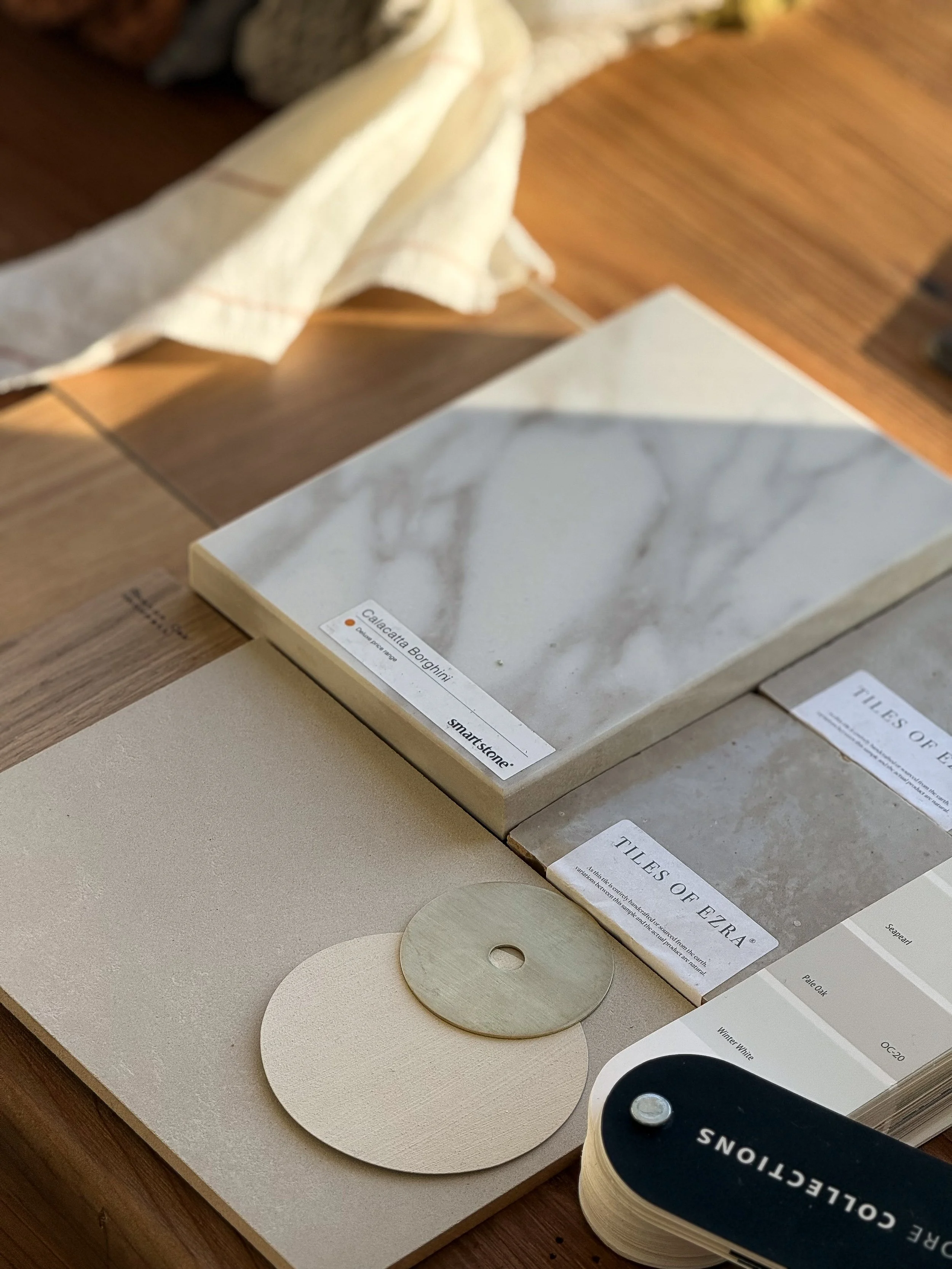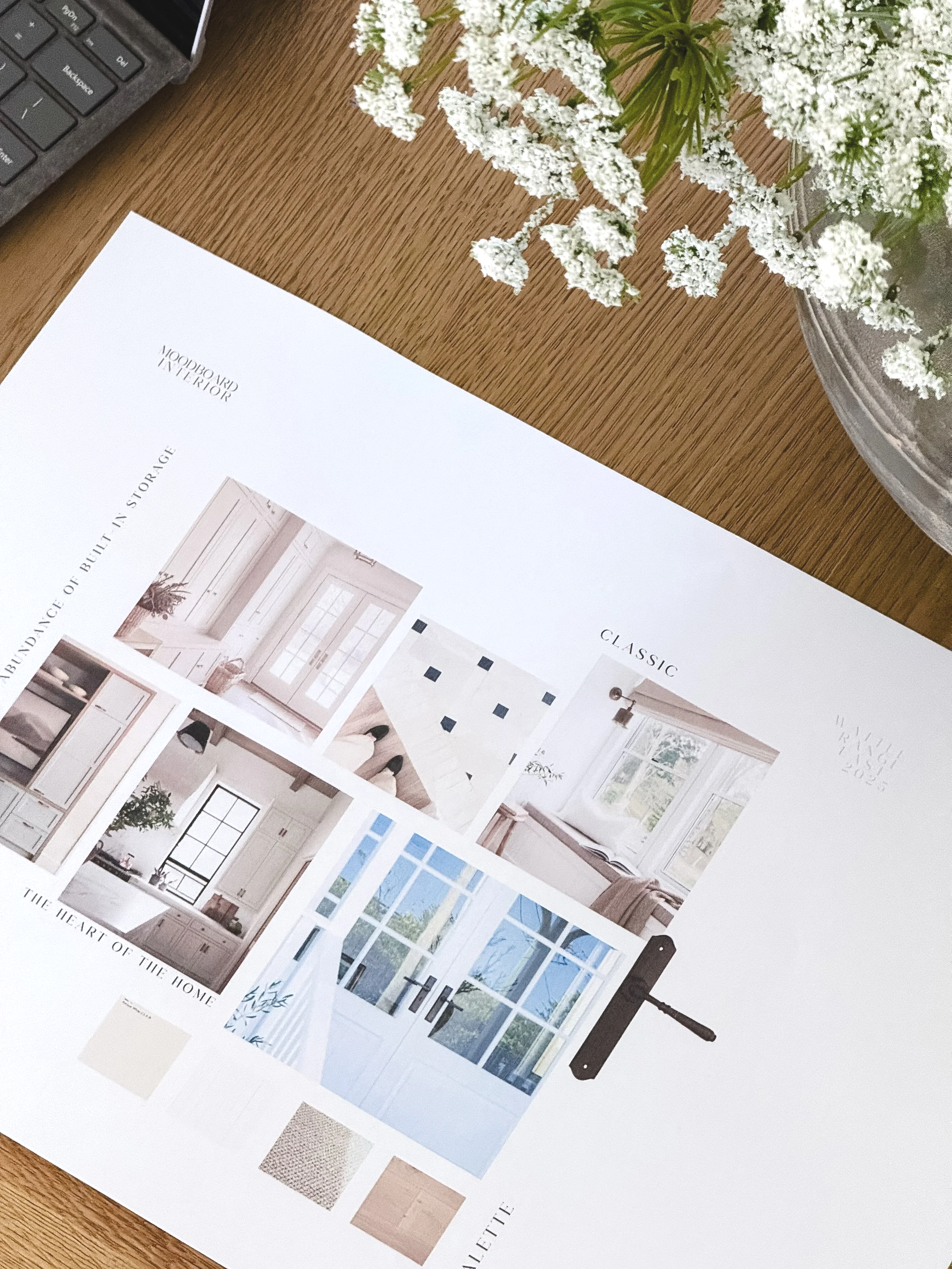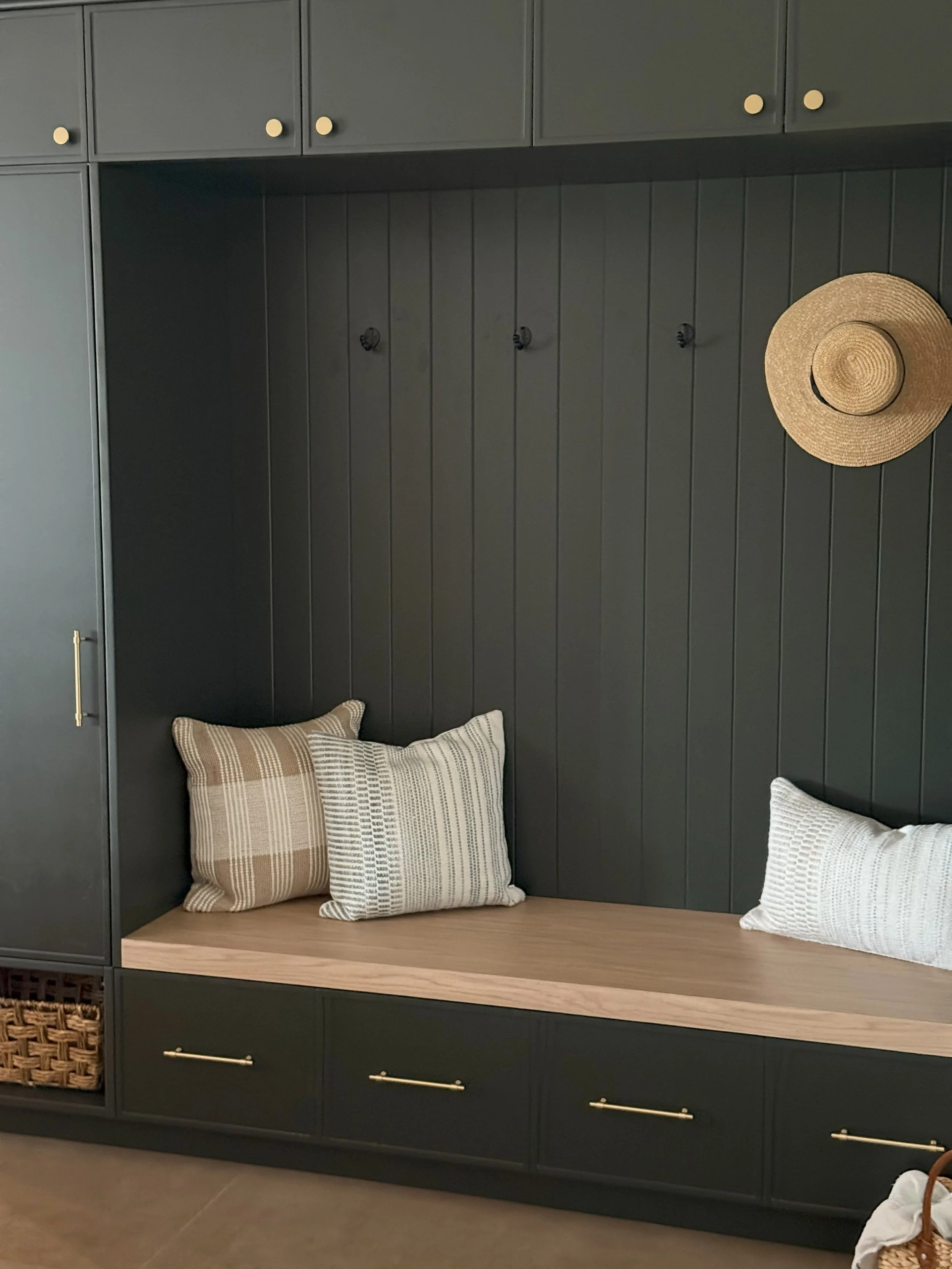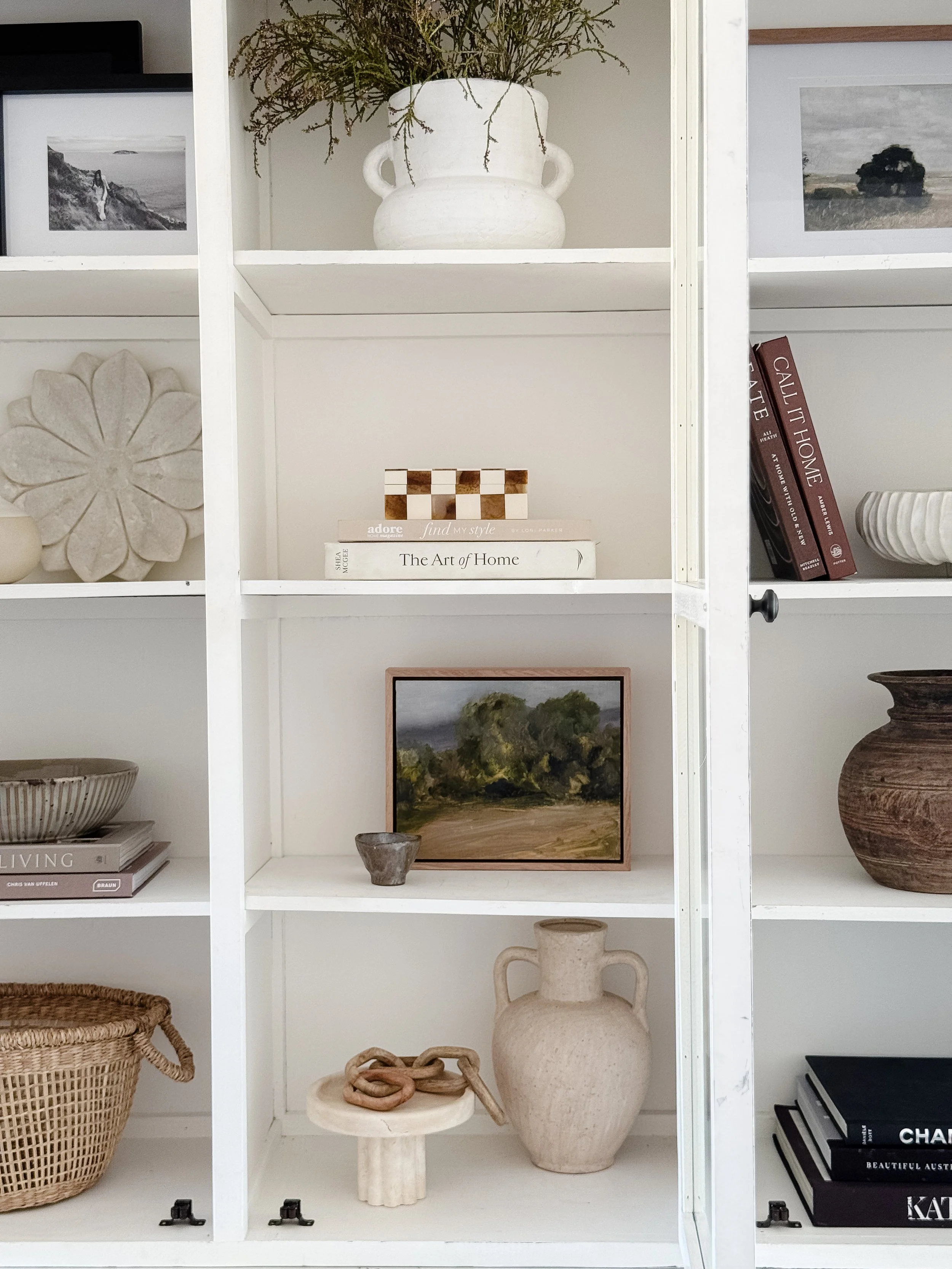How to Find Your Interior Style (Even If You Love Everything)
If you’re planning a renovation or decorating a new home, chances are you’ve saved a lot of inspiration — airy coastal kitchens, moody classic living rooms, organic modern bathrooms, minimal timber joinery, the list goes on. And yet, when it comes to pulling it all together, nothing feels quite right.
It’s one of the most common frustrations I see as a designer. Most people don’t have one single, neatly defined “style.” They have preferences. They’re drawn to certain materials, shapes, moods and feelings, often from different ends of the design spectrum — and then feel paralysed trying to choose one over the other.
The good news is: you don’t have to. Defining your interior style isn’t about putting yourself in a box. It’s about uncovering the thread that ties all those inspirations together and translating it into a home that feels deeply authentic and cohesive. Here’s how to start.
1. Focus on how you want your home to feel
Material flat lay for an upcoming Adelaide kitchen — warm, calm and timeless.
Before you think about labels like “modern farmhouse” or “coastal classic,” pause and ask yourself a much more important question: how do I want my home to feel? Calm? Grounding? Warm and layered? Bright and uplifting?
This is the foundation of great design. A home that reflects a feeling will always feel more authentic and timeless than one chasing a trend or a name.
If that’s hard to answer, think about places that bring you the most joy and peace — a national park you love to walk through, a trail from your childhood, or a seaside holiday you still think about. What is it about those moments that stays with you? Is it the colours, the variety of textures, the soft quality of light, or the sense of ease they create? Those are powerful clues to the feelings you want your home to evoke.
2. Let your home and its story guide you
Mood board for a South Australian farmhouse renovation — classic character with a modern edge.
Another place I always start when defining a design direction is the home itself. The architecture, the light, the era it was built in, and even the location all offer important cues about what will feel natural and harmonious. That doesn’t mean you need to design in a way that’s historically rigid — you can absolutely put your own stamp on any style of home. But honouring the character of the building and the setting will help your design feel grounded and considered rather than forced.
For example, a Victorian villa in Adelaide might lend itself beautifully to timeless detailing with a contemporary twist, while a coastal home might naturally suit soft textures, natural materials and a seamless indoor-outdoor connection. If you’re feeling lost in a sea of styles, starting with the story of the home itself can often point you in the right direction.
3. Spot the patterns in what you love
These homeowners loved depth of colour with a modern take on classic cabinetry references - so fitting for it’s rural countryside location.
Once you’ve defined the feeling and considered the context, it’s time to go back to that overflowing Pinterest board or saved folder. Instead of scrolling aimlessly, look for patterns. What materials appear again and again? Are you drawn to warm timbers or crisp painted cabinetry? Do you gravitate towards soft neutral palettes or bold, contrasting tones? Are the spaces you save usually light and airy or moody and intimate? When you view your inspiration through this lens, you’ll start to see the common threads that define your taste — even if the individual images are from very different styles.
As you start to recognise those recurring threads, you’ll often find words that naturally emerge to describe your style — not as strict labels, but as a blend of influences that feel like you. Maybe it’s “light European farmhouse,” “organic coastal classic,” or “modern cottage warmth.” These phrases become a helpful shorthand and guiding star as you make decisions, keeping your vision clear without boxing you in.
4. Curate, don’t collect
In my own home I’m so drawn to pieces with age, patina and a rustic feel. But I like to mix with modern, crisper pieces to create just the right push and pull between old world and modern freshness.
This is the hardest part for most people — editing. You might love certain looks, but that doesn’t mean they all belong in your home. Once you’ve identified your common threads, remove anything from your inspiration that doesn’t align with them, even if you still like it.
This doesn’t mean you’re rejecting those styles entirely. It just means you’re curating what belongs in this home, at this time, based on how you want it to feel.
5. Use your common thread as your guide
These homeowners craved calm amongst the chaos of their daily lives, and a hint of luxury. Classic panelling was the perfect inclusion for this character bungalow and the existing architecture in the home,
Now that you’ve clarified the feeling, the home’s context, and the key elements that repeat in your inspiration, you have something far more powerful than a “style.” You have a direction.
From here, every decision — from paint colours and finishes to furniture and lighting — can be held up against that vision. Does it align with the feeling you want? Does it reflect the story of the home? Does it reinforce the threads you’ve identified? If the answer is yes, you’re building a cohesive home that will feel timeless and deeply authentic.
Bringing It All Together
Finding your interior style isn’t about following trends or choosing a label from a drop-down menu. It’s about tuning into how you want to live, what your home is telling you, and what truly resonates — then letting those insights guide every decision.
So next time you find yourself in a Pinterest spiral, don’t get overwhelmed — get curious. Look for the patterns. Notice the feelings. And trust that your style isn’t something you need to invent — it’s already there, waiting to be uncovered.
Whether you’re renovating an entire home or refreshing a single room, this approach will help you create a space that feels cohesive, timeless, and deeply authentic to you.
Until next time,
x Lottie
Loved this guide? Save it for when you’re planning your next project or share it with someone who’s dreaming of their own beautiful home.





